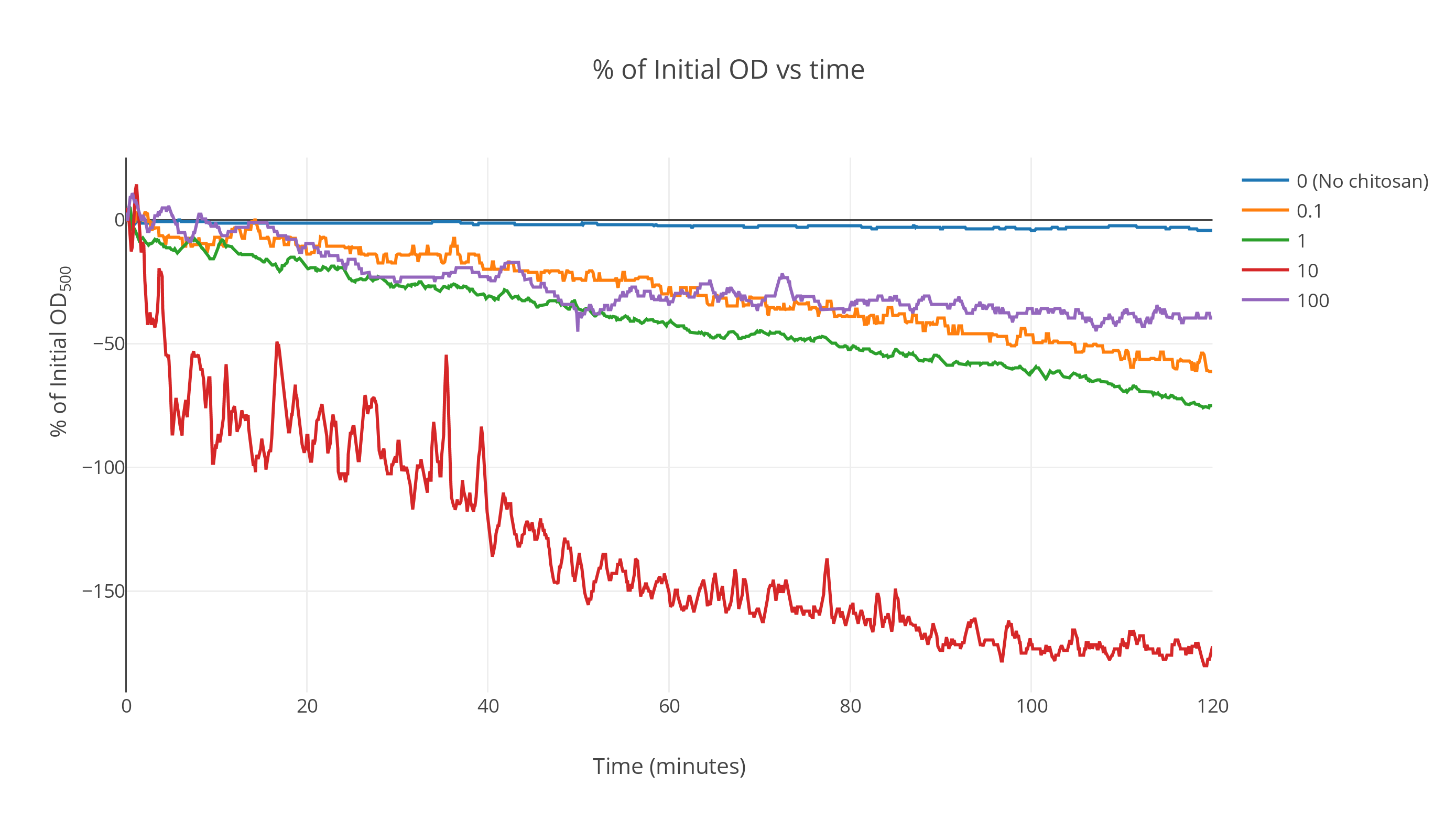Chitosan
Chitosan
The data when averaged over the replicates shows a marked faster decrease in OD as time passes for chitosan treated gas vesicles. The gas vesicles without chitosan show no significant decrease over a duration of two hours while the ones with an intermediate chitosan concentration show a fast decrease at the start which saturates as time passes. All other curves lie above this one (Fig 1). At very high concentrations, it was seen that the saturation point shifted upwards. We postulate this is because of the gas vesicles being irreversibly denatured by the action of excessive acetic acid concentration during chitosan incubation. More detailed analysis can be conducted to find the optimum concentration at which maximum flotation is achieved. From these results, we expect it to be around the 500ng/ul order of magnitude.
The plot was smoothed out over a window of 85 data points giving the smooth profiles. (Fig 2)


It was found that the particle size increased considerably on addition of chitosan. The data from the Dynamic light scattering experiment is plotted in Figure 3. It was seen that at very high chitosan concentration, the RH dropped back to a nominal value. This might be due to a lysis of the vesicles when they were incubated at extremely high concentration of acetic acid.

Biotin-Streptavidin
NHS-Biotin was used to tag gas vesicles and streptavidin was added to allow the tagged gas vesicles to flocculate. This experiment was conducted in two ways.
Method I:
Our protocol for biotinylation requires the addition of NHS-Biotin in more than 20 fold molar excess. The first strategy that was adpoted to discourage binding of streptavidin was to add the streptavidin in excess. As each streptavidin molecule can potentially bind to four biotins, a 1/4 molar ratio would imply proper stoichiometry for the reactions. We settled with a 1/2 ratio of Streptavidin:Biotin to ensure that all biotin in the suspension is sequestered.
Method II:
The second way in which we decided to remove excess biotin was by enriching with gas vesicles by centrifugation. After incubation with NHS-Biotin, the gas vesicles were centrifuged at 500rpm overnight to allow them to float to the top. This was followed by removal of the top layer and incubation with mild quantities of streptavidin. The mesurements were repeated thrice for all samples.












